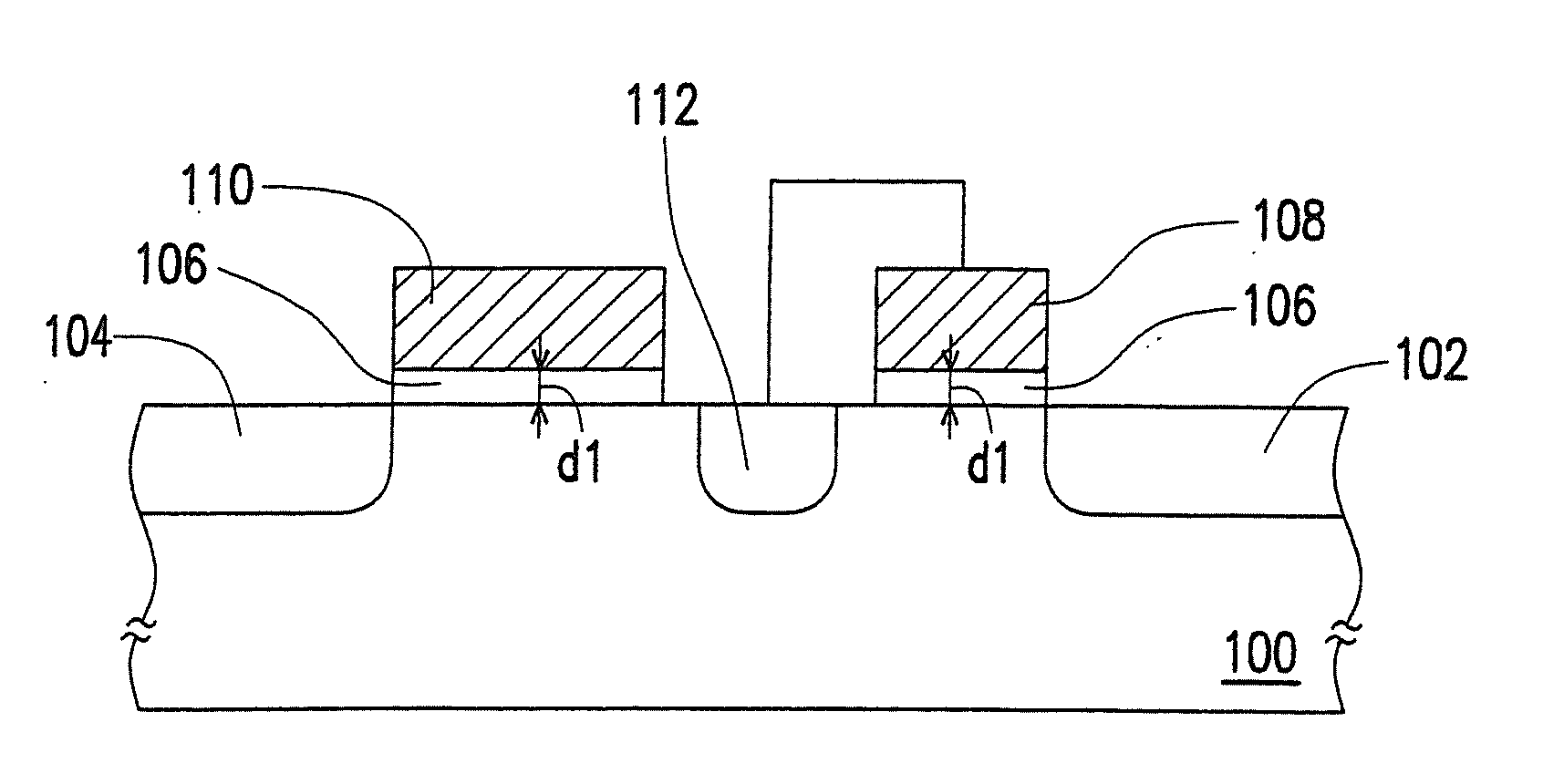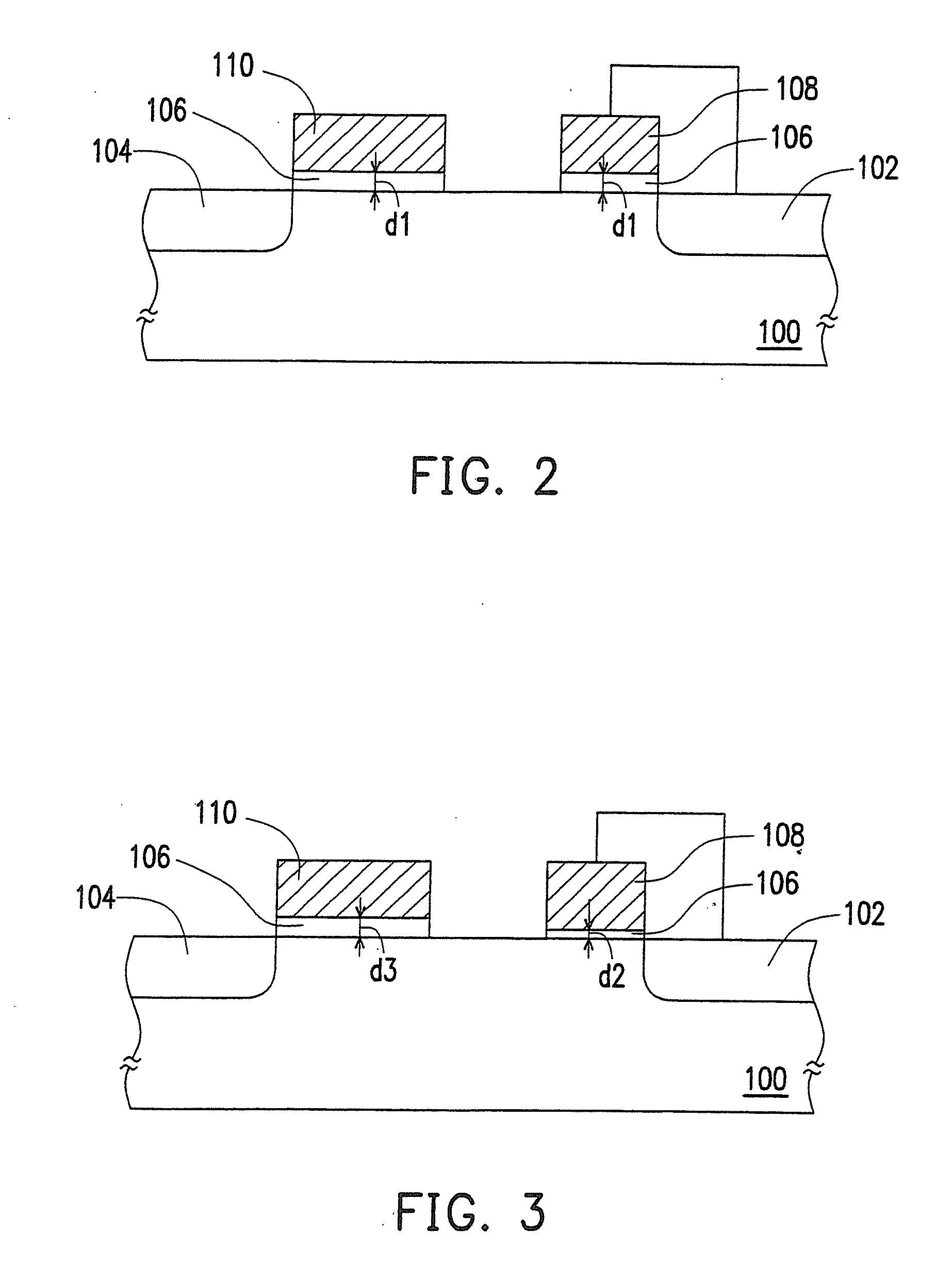Method for operating one-time programmable read-only memory
a one-time programmable, read-only memory technology, applied in the field of memory operation, to achieve the effect of effectively storing data
- Summary
- Abstract
- Description
- Claims
- Application Information
AI Technical Summary
Benefits of technology
Problems solved by technology
Method used
Image
Examples
first embodiment
[0020]FIG. 1 is a top view of an OTP-ROM according to the present invention. FIG. 2 is a cross-sectional view along line A-A' in FIG. 1.
[0021]Referring to FIGS. 1 and 2, the OTP-ROM includes a substrate 100, a doped region 102, a doped region 104, a gate dielectric layer 106, a gate 108, and a gate 110. The OTP-ROM is an N-type memory cell or a P-type memory cell. In the present embodiment, the OTP-ROM is the N-type memory cell, for example.
[0022]The substrate 100 is of a first conductive type having an N-type dopant or a P-type dopant. In the present embodiment, the substrate 100 is the P-type substrate, for example.
[0023]The doped regions 102 and 104 are of a second conductive type and are separately disposed in the substrate 100 within an active region 114. The doped region 102 serves as a source line, while the doped region 104 serves as a bit line. The doped regions 102 and 104 are formed through performing an ion implantation process, for example. Here, the second conductive t...
second embodiment
[0034]Referring to FIG. 3, in the second embodiment, the gate dielectric layer 106 has a thickness d2 and a thickness d3. The gate dielectric layer 106 having the thickness d2 is disposed below the gate 108, while the gate dielectric layer 106 having the thickness d3 is below the gate 110. Here, the thickness d2 is less than the thickness d3.
third embodiment
[0035]Referring to FIG. 4, in the third embodiment, the gate dielectric layer 106 disposed below the gate 108 has a thickness d4 and a thickness d5. The gate dielectric layer 106 having the thickness d4 is adjacent to the doped region 102, while the gate dielectric layer 106 having the thickness d5 is adjacent to the doped region 104. Here, the thickness d4 is greater than the thickness d5. Besides, the gate dielectric layer 106 disposed below the gate 110 has the thickness d5, for example.
PUM
 Login to View More
Login to View More Abstract
Description
Claims
Application Information
 Login to View More
Login to View More - R&D
- Intellectual Property
- Life Sciences
- Materials
- Tech Scout
- Unparalleled Data Quality
- Higher Quality Content
- 60% Fewer Hallucinations
Browse by: Latest US Patents, China's latest patents, Technical Efficacy Thesaurus, Application Domain, Technology Topic, Popular Technical Reports.
© 2025 PatSnap. All rights reserved.Legal|Privacy policy|Modern Slavery Act Transparency Statement|Sitemap|About US| Contact US: help@patsnap.com



